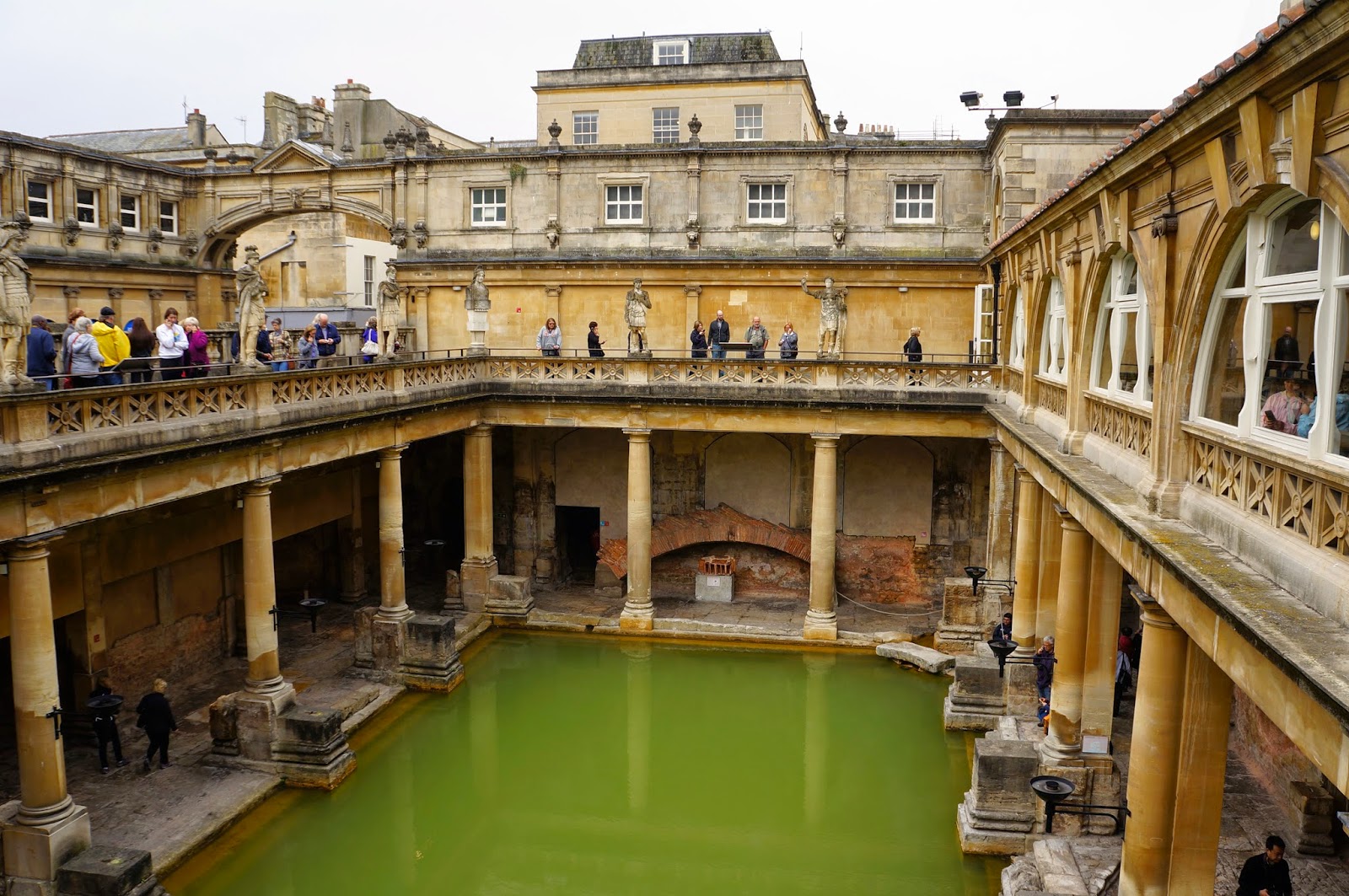 |
| Before leaving Somerset, we spent a day in Bath, or Aquae Sulis, as the Romans called it. Before the Romans, the ancient Britons worshipped Sulis here — a life-giving mother goddess, guardian of the hot springs. The Romans merged Sulis with Minerva (who was also equated with the Greek goddess Athena, and is one of my favourite goddesses): deity of wisdom, music, poetry, weaving, crafts, magic, medicine, trade and commerce — kind of covering all options. Minerva-Athena is one of the daughters of Jupiter-Zeus, and is often depicted with an owl. The photo shows the Roman Baths at Bath, which have been impressively excavated, and are one of Britain's biggest cultural tourist attractions. In a bid to avoid the crowds, we arrived as soon as the doors had opened. |
 |
| Overlooking the Baths is Bath Abbey, the Abbey Church of Saint Peter and Saint Paul — which used to be a Benedictine monastery in medieval times. It has been heavily restored. |
 |
| Detail from the Baths' upper southern wall, which are post-Roman. The older bits are the lower bits. |
 |
| There's lots to see in the Roman Baths Museum. I think this carving was captioned 'Three Women', but I can't remember for sure. Perhaps it depicts the mythological Wyrd (Weird) Sisters, developed by Shakespeare as the Three Witches in Macbeth — though they don't particularly look like witches. On the other hand, they may be the Three Fates of Roman religion, the Parcae: Nona, Decima and Morta. Or perhaps they are simply three women with very round heads and very thin necks. |
 |
| The partially reconstructed pediment from Bath's Roman temple of Sulis Minerva. Scholars think that the head in the centre is a Gorgon's head. Just to the right of the head, tucked into the corner, is an owl, symbol of Minerva. |
 |
| The gilt bronze head of Sulis Minerva — probably from a statue of the goddess which stood in the temple. Only two other fragments of gilt bronze sculptures from Roman Britain have ever been found. |
 |
| Pulteney Bridge over the river Avon in Bath, designed by Robert Adam and completed in 1774. It has shops along both sides of its span. I don't know about you, but what came immediately to my mind was the Ponte Vecchio in Florence. |
 |
| From the sublime to . . . well, the sublime. It's Ronnie Wood's guitar on display in the window of a Bath commercial art gallery! There were also his mate Bob Dylan's paintings for sale inside. |

6 comments:
Haven't been here for years either Robert, so another enjoyable post for me.
Wow! There is so much of historic interest for you and Carmen to see in your native land. Such a good time of year for traveling together.
More and more I wonder where my English ancestors lived. I'm fairly sure that there were ancestors with the name Somersall in Islington, but it's not clear where else the ancestors might have lived, possibly Chesterfield. My ancestors settled in Ontario, Canada, before settling in the United States around Boston.
What an interesting life you lead. Glad I found your blog. Love the history lessons. I think I lived in Great Britain in a previous life. Only time there, I spent the whole time in London and regret not traveling around GB.
Thanks for all these three comments., and welcome, Donna.
If you were to trace your family tree, Am, you would have a good start with that name 'Somersall', as I think it's quite uncommon.
Chesterfield lies due west of here, quite near — it's on the edge of the Peak District, England's first National Park. I've walked there often. Chesterfield is well known for its church's crooked spire.
Oh quite marvelous. I have to get there one day. A delightful post.
And I can't help linking in my mind to Amanda's post on Hecate, and the origin of those witches with cauldrons.
Yes, Halloween is in the air...
Post a Comment